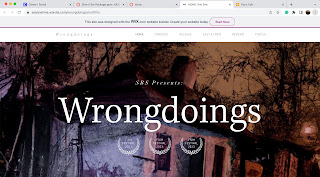Genre Research: Mystery
The last genre we are considering is mystery.
- Common Camera Angles: High and low angled shots are used most commonly in these types of films. They help establish the film's power dynamic. For example, a low angled shot establishes authority and power to the individual(s) it faces. A high angled shot accentuates the vulnerability of the victim(s) and establishes LACK of authority.
- Common Costumes: Detective and or work attire is common clothes that are worn and seen throughout mysteries. Things like suits, ties, and trench coats.
- Common types of editing are fade in, dissolve, and cutaways
- A common type of lighting is dark lighting. There will be multiple pitch-black scenes and light and/or dark scenes. Silhouetting is a very common lighting technique used in mysteries.
- Common types of makeup is little to no makeup. Occasionally, make-up is made to look like blood and bruising is used.
- Common settings include dark alleyways and places like hotels. Although with mystery, settings can have an exceptionally large variation, like any other genre.
- Common editing elements are flashbacks that give the audience a good backstory to better understand the film.
- Common sound aspects are implementing voiceovers into the film, commonly over backstories, to give a suspenseful setting.
- Elements of the genre I like and would use are definitely the lighting and silhouette aspects, as they are what give mystery films the best sense of suspense.
- Elements of the genre that do not appeal to me are definitely the use of alleyways as settings, as I think it is way over used and does not give the flare and creativity a mystery film should have.
- Some example films are Fear Street Part Three: 1666, Knives Out, and Scoob!


Comments
Post a Comment